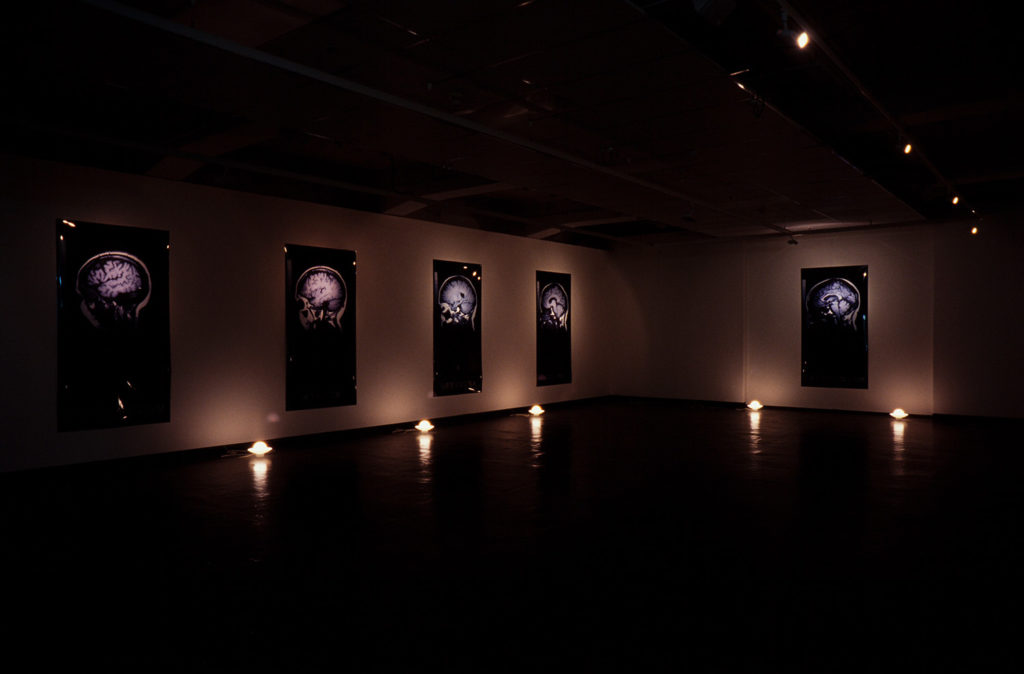PUBLICATION interview Christina Barton
Vivian Lynn is a key figure in the New Zealand women’s art movement. In the late 1960s, the Wellington artist abandoned painting, believing that ‘a feminist oil painting on canvas is an oxymoron’. She would develop a new artistic language, often using untraditional mediums, such as hair.
From the late 1980s, Lynn used medical imagery in her work. Spin: Versor, Versari presents nine large reproductions of MRI scans of the artist’s brain taken in 1995. The series was partly inspired by a visit she made to Pompeii’s Villa dei Misteri (Villa of Mysteries) in 1989. She takes the Latin names given to the rooms, where different activities took place, and applies them to each of the images of her brain, which are hung as a frieze around the gallery. As you walk through the gallery, as if walking through the Villa, you journey through her brain, traveling deeper into it. This is the self-portrait taken to an extreme.
In the Dominion, Pauline Swain writes that the project’s symmetry, dim lighting, and subject matter create a ‘contemplative mood; almost temple-like’. In the Evening Post, Mark Amery says that the show could be seen as voyeuristic—peering into another’s head. He says an interpretation could be ‘women are brainy’. (Lynn, by contrasts, asks: how can a brainy female be represented when we live in a culture dominated by masculine value systems?)
Spin: Versor, Versari puts the public/private dichotomy up for consideration, as Lynn addresses how medical technology has altered our sense of our own intimate boundaries. We are invited into the artist’s brain as if we are being invited into rooms in a house. The Villa dei Misteri—a home, once defined as private—is now open to thousands of tourists to traipse through daily. In Spin: Versor, Versari, the house stands as society and the brain as the body—the culturally conditioned body.
Lynn has consistently reflected on the politics of gender throughout her work. In the Sunday Star Times, she says her work is ‘resisting the dominant order, and the point of that resistance is not taking anything at face value’. Her show’s title alludes to being in a situation of constant change. In the interview, she says ‘the nuclei of my brain cells are constantly spinning.’
Spin: Versor, Versari is Lynn’s third show at the Gallery, following shows in 1982 and 1986. After it, Wellington’s Brooker Gallery presents Lynn's show Angels: Chimeric Antibodies, based on the same MRI scans. It makes another association, linking the brain with the immune system and the embodied liminal space—the angel.





















